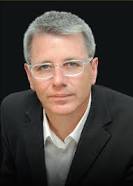Please help rabble.ca stop Harper’s election fraud plan. Become a monthly supporter.
Federal byelections can be quite dramatic, harbingers of political upheaval to come.
We saw that back in 1978 when the tired Liberal government of Pierre Trudeau, backed into a constitutional corner, was forced to call no fewer than 15 byelections, all held on October 16 that year. The Liberals’ worst fears were realized as they took a beating everywhere, winning just two of the byelections, both in Quebec. Seven months later, the Grits were out of office and the Tories, under Joe Clark, were in (briefly).
In March 1989, Deborah Grey won a byelection in the Alberta riding of Beaver River. Her victory, by a wide margin over a Progressive Conservative, signalled the arrival of the Reform party and the beginning of the disintegration of the Tory base on the Prairies.
Seventeen months later, in August 1990, a Quebec union organizer, Gilles Duceppe, captured Laurier-Sainte Marie in a byelection. He ran as an independent because he did not yet have a party to join. But that party, the Bloc Québécois, was soon created by defectors from the Liberals and Tories; in 1997, it became the official opposition in Ottawa.
There were four federal byelections last week, two in Ontario and two in Alberta. They did not offer the drama of the contests mentioned above. The Conservatives retained their two Alberta seats and the Liberals held theirs in Scarborough-Agincourt. The only change came in the inner city Toronto riding of Trinity-Spadina, Olivia Chow’s old seat. It has been an NDP-Liberal swing seat, and this time it swung back to the Liberals, with city councillor Adam Vaughan as their high-profile candidate.
But more happened last week than met the casual eye. The exceptionally low turnout masked some revealing movement. The Liberals gained strength everywhere while the Conservative lost vote share, even in the two Alberta seats that they won.
The Liberals took an aggregate average of 21 per cent of the vote in the four ridings in the 2011 general election. In last week’s byelections, they averaged 41 per cent. The Tories, meanwhile, collected an average of 38 per cent in the byelections, down from 50 per cent in 2011.
The NDP’s share dropped from 24 per cent to 15, while the Green party held steady at 4 per cent.
It would be foolish to read too much significance into the byelections. The results, however, do reflect the same trends as the national polls. The Liberals retain the momentum that has kept them in first place in the polls since Justin Trudeau became leader 14 months ago.
Conservative support is stagnant, at best. Some cracks are appearing in their base, even Fortress Alberta. Their negative attacks on Trudeau’s maturity and ability have done the Tories no good and may have hurt their cause.
For the New Democrats, the 103 seats and official opposition status they won under the late Jack Layton, is as good as it will probably get. Despite the stellar parliamentary leadership of Thomas Mulcair, they seem destined to slip back to their accustomed third place, as the 60-odd per cent of Canadians who reject Stephen Harper’s Conservatives mostly choose the Liberals over the New Democrats as their default government. For Elizabeth May and her Greens, the numbers suggest more of the same — a fringe party clinging to one or two seats in Parliament.
There is nothing at this stage to indicate that any party has enough support, or momentum, to elect a majority government. Anything can happen between now and October 2015 when the next election is scheduled, but as matters stand a minority government is a real possibility.
For Justin Trudeau, a minority Liberal government would be a huge breakthrough and a personal vindication. A minority Conservative government would be, for Trudeau, a smaller breakthrough but a victory nonetheless — and an opportunity to continue to build. For Harper, reduction to a minority would signal the end of the road after nine years as prime minister.
Cambridge resident Geoffrey Stevens, an author and former Ottawa columnist and managing editor of the Globe and Mail, teaches political science at Wilfrid Laurier University and the University of Guelph. His column appears weekly in Waterloo Region Record and Guelph Mercury. He welcomes comments at [email protected]



